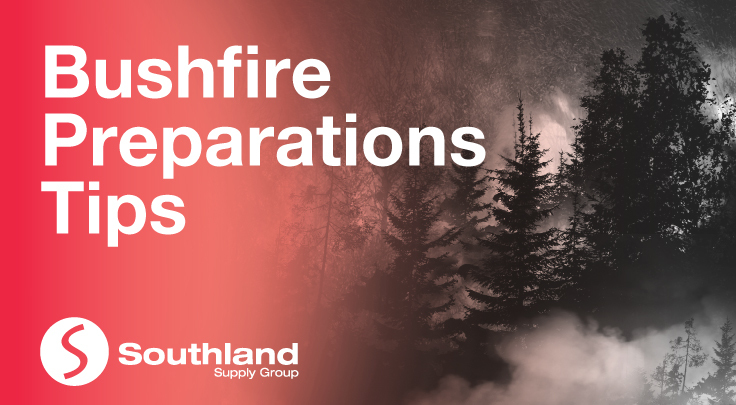
Bushfires are a part of Australia, and the summer months of December, January and February are peak bushfire season. People living in the country, or in rural residential areas are the most exposed to the threat of bushfires, so it is critical to understand the risks and have a plan of what to do when a bushfire threatens your workplace, home or family.
Despite bushfires being a common hazard of the Australian summer, many property owners and families remain unprepared to mitigate the risk of damage to their property.
Whether you live in the country, in the outer suburbs of a town or city, or near the coast, planning for bushfires could save your life, your home and your workplace.
Here are some tips you can do to reduce bushfire risk:
- Prepare a bushfire survival plan - The survival plan should outline the steps you and your family members need to take to ensure their safety. Remember to consider different situations – bushfire conditions change rapidly. Don’t just have a Plan A; also consider Plans B, C and D.
- Have an evacuation plan in place - prepare an evacuation plan for family, staff and pets that designates an assembly point, responsibilities, and transport. Not everyone responds calmly in a crisis, so a regular practice of the evacuation drill with the whole family is important preparation.
- Prepare your bushfire emergency kit - Your workplace and household should have an emergency kit packed and ready to go if you need to leave your home for a safer location. Your emergency kit should include heat resistant goggles, respirator kit, fire blanket, and potentially even some fire fighting jackets and trousers.
- Cleanup outside - Keep outdoor combustibles to a minimum. Make sure that dry foliage such as fallen leaves are cleared away, particularly from roofs and gutters. Trees overhanging buildings should be cut back where permitted.
- Check the Fire Danger Rating each day - The Fire Danger Rating is an indicator of how dangerous a bushfire could be if it did occur. While it does not predict how likely a bushfire is to occur, it should be used as an early indicator to trigger your plans. The Bureau of Meteorology forecasts the rating each day. The higher the Fire Danger Rating, the more dangerous the fire conditions.
- Share your plan with others - When creating a bushfire preparedness and survival plan for your business or for your family, ensure to include both your employees and neighbours from other businesses in its development. If a bushfire is going to impact you, it’s likely going to impact them too.
By sharing it to a wider group of people to develop the plan, you will be able to look more broadly at what you already have ready, what you need to do to get ready and how you can work together to evacuate if the time comes.
Bushfires can cause serious property and infrastructure damage and can lead to terrible loss of life. For further bushfire risk management tips and advice, please consult with your local fire authority.
Remember, preparing for a bushfire can save you, your family, your property, and your livelihood. For a complete list of bushfire safety gear, emergency kit and first aid kit that you can use to prepare for a bushfire, see Southland’s complete range on our website at https://southland.com.au/
